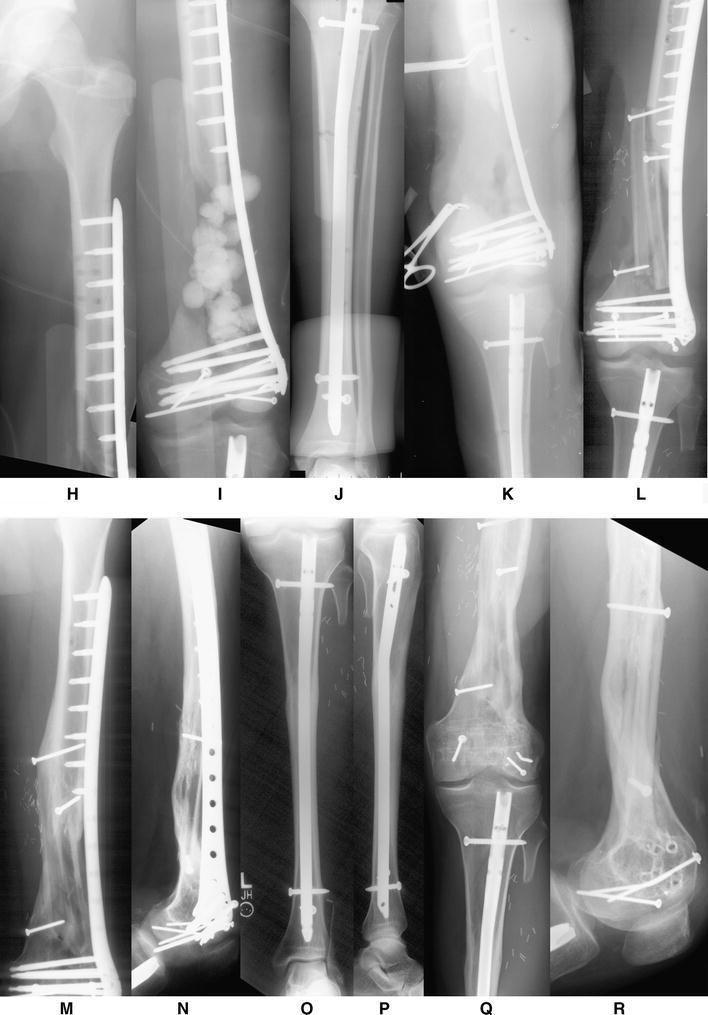Fig. 2.


A 17-year-old male was involved in a head-on collision with a tractor trailer. After being trapped inside the vehicle for approximately one hour, he was extricated and flown to a local trauma center. He was diagnosed with an open, Grade IIIC left-sided AO/OTA Type C3.3 distal femur fracture with segmental defect and an ipsilateral tibial shaft fracture. External fixation was placed for initial stabilization, and antibiotic beads were subsequently placed in the defect at 3 days following injury. Open reduction and internal fixation (ORIF) was performed with placement of an intramedullary (IM) locked nail for treatment of the tibial shaft fracture and then ORIF of the distal femur fracture with placement of a less invasive stabilization system (LISS) locking plate and screws. One week later, the antibiotic beads were removed and the defect was prepared for bone graft placement. A second incision was made along the lateral border of the ipsilateral fibula, and a free vascularized fibula bone graft was harvested for transplant to the femoral defect. It was docked in a double barrel fashion and stabilized using screw fixation. Following surgery, he returned for regular follow-up visits. Three months after surgery, all of the fractures were healing with incorporation of bone graft. The LISS plate was removed 4.5 years following the initial surgery. The clinical and radiographic follow-up illustrated excellent results with bony union, full range of motion, and complete resolution of pain and return to preinjury activities. a, b, c Anteroposterior (AP) x-rays illustrating an AO/OTA Type C3.3 distal femur fracture with segmental bone defect and an ipsilateral tibial shaft fracture. d, e, f AP and lateral radiographs following placement of external fixation and antibiotic beads at the site of the segmental bone defect. g Clockwise from top-left; preoperative plan, fluoroscopic images showing placement of intramedullary nail for the tibial shaft fracture and locking screws and ORIF of the distal femur fracture with placement of a LISS locking plate and screws. h, i, j Immediate postoperative radiographs demonstrating adequate fixation and alignment. k AP radiographs illustrating preparation of distal femoral bone defect for placement of vascular bone graft. l AP x-radiograph following free vascularized fibular bone and placement of screw fixation. m, n, o, p AP and lateral x-rays 3.5 years following ORIF showing healed a distal femur fracture with incorporation of the fibular bone graft and a healed tibial shaft fracture. q, r AP and lateral x-rays 8 months following removal of LISS plate and screws and 4.5 years following fracture surgery
